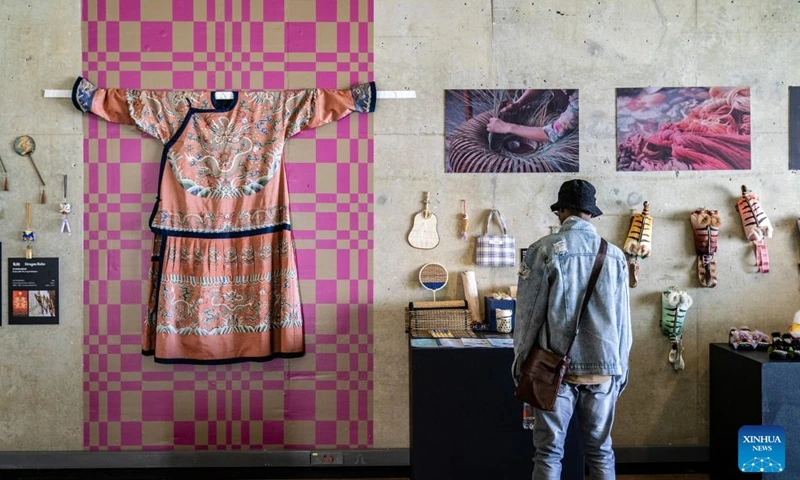Chinese Handicraft Art Exhibition Opens In South Africa
The University of Johannesburg (UJ) Art Gallery is hosting the first leg of the “Belt and Road” International Handicraft Art Exhibition, themed “Dialogue with World Cultures.” The exhibition opened on Friday, November 29, and will run until January 25, 2025, showcasing an array of exquisite Chinese handicrafts and cultural artifacts.
The exhibition, organized by Shanghai University in China and UJ in South Africa, marks a significant milestone in fostering cultural ties under China’s Belt and Road Initiative (BRI).
After its South African debut, the exhibition is set to tour globally, visiting countries such as Kazakhstan, Sweden, Turkey, New Zealand, Australia, France, and Italy.
Speaking at the opening ceremony, Minister Li Zhigang from the Chinese Embassy in South Africa emphasized the exhibition’s role in bridging cultural gaps and enhancing mutual understanding between nations.
“Intangible cultural heritage is a treasure of human civilization, a precious wealth accumulated from diverse cultures over the long course of history,” he said. “Painting and handicrafts have long served as a universal language of connection between people worldwide. This exhibition underscores the potential for more cultural and artistic exchanges between China and South Africa.”
Federico Freschi, the executive dean of UJ’s Faculty of Art, Design, and Architecture, highlighted the significance of the event in preserving and celebrating cultural heritage. “Handicrafts are not just objects; they are cultural treasures that embody history, tradition, and creativity,” he said.
The exhibition features dozens of skills and art forms that are part of China’s intangible cultural heritage, with contributions from master artisans. The pieces are organized into three themed sections:
- Maritime Blossoms, which celebrates cultural connections through maritime trade.
- Symbiosis of All Things, emphasizes harmony between humanity and nature.
- Endless Vitality, showcases the continuity and innovation of traditional craftsmanship.
Visitors can explore a diverse collection of intricate artifacts, including embroidery, paper cutting, kesi (silk tapestry), kites, nianhua (New Year paintings), silver pots, and purple clay teapots.
Cross-genre projects that combine modern art with traditional techniques are also on display, offering a fresh perspective on ancient crafts.
The Belt and Road Initiative and Its Cultural Mission
The exhibition is part of the broader cultural agenda of the Belt and Road Initiative, a global development strategy introduced by China to promote economic and cultural collaboration among participating countries.
While the initiative has often been associated with infrastructure projects, such as railways and ports, its cultural dimension seeks to build people-to-people connections through art, education, and heritage exchanges.
South Africa, as a member of the BRICS bloc and a key partner in the Belt and Road Initiative, has seen growing collaboration with China in various sectors, including trade, technology, and now cultural diplomacy.
This exhibition serves as a tangible example of how the initiative goes beyond economics to create a platform for global cultural dialogue.
Building Bridges Through Art
In addition to the display of artifacts, the exhibition includes live demonstrations by artisans, allowing visitors to witness traditional techniques firsthand. These interactions aim to deepen appreciation for the craftsmanship and the stories behind each piece.
Local attendees expressed enthusiasm for the event, describing it as an eye-opening experience. “It’s fascinating to see how much history and creativity are woven into these crafts. It reminds us of the importance of preserving our own cultural heritage while learning from others,” said a UJ student visiting the gallery.
As the exhibition continues its journey across continents, it is expected to leave an indelible mark on audiences worldwide, fostering greater cultural understanding and unity. For South Africans, it provides a unique opportunity to engage with China’s rich artistic traditions and reflect on the shared values of cultural preservation and creativity. Entry is free, making it accessible to art lovers, students, and families alike.

